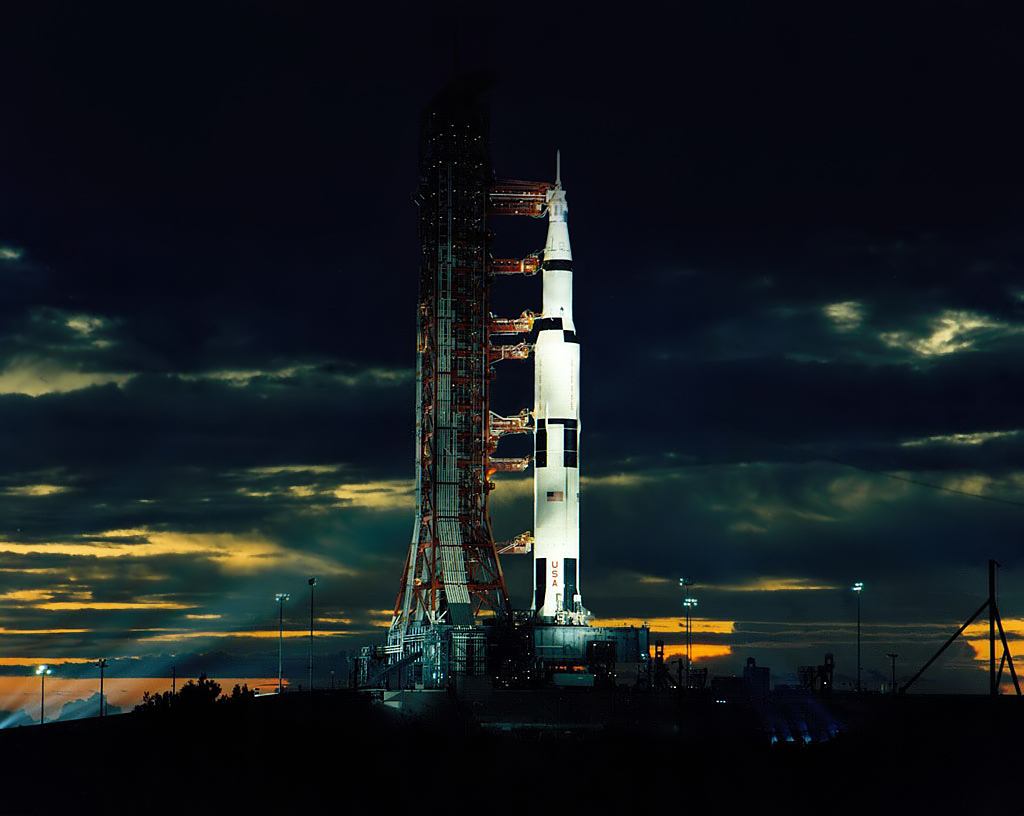I didn’t believe him. Just like I’m told I didn’t believe in Father Christmas or any other mythical creatures. Maybe it was because I had the good fortune to be born and be a curious child in one of the historical golden age of science and engineering, the 1960s. In that decade and in the early 70s humanity achieved some remarkable things. The most obvious was the triumph of the missions to the Moon.
The Apollo missions were famously inspired by President John F Kennedy, who, in 1961 told the US Congress of his plan for "landing a man on the Moon and returning him safely to the Earth" before the end of the decade.
There were several reasons for this. One was that Kennedy was desperate to get back in the lead in the so-called Space Race. Only 6 weeks beforehand Russians cosmonaut Yuri Gagarin had become the first human in space, leaving the Americans lagging behind. Although space exploration wasn’t itself a defense priority any perception of weakness or being in second place was going to be a Cold War propaganda disaster for the USA.
The more uplifting motivation behind the program was a simple human one. Like our cousins, the other great apes, perhaps the one thing we have that separates us most from other species is our curiosity. It’s human nature to want to know what’s on the other side of the hill. Exploration of the world and of space has always fascinated humanity and in the 1960s Kennedy encouraged that with resources, money and a very limited amount of time.
Perhaps the most influential of all the reasons for this was the least planned. Out of this spirit of exploration came innovation and inspiration. There were also enormous economic benefits. It’s been suggested that for every $1 the US Government spent on the space program they received $8 back indirectly. The technological developments you and I now have that came from, or were encouraged by the space program is almost endless. Miniaturization of electronics, water purification, scratch-resistant lenses, smoke detectors, improved solar panels, fire resistant materials, radiation protection, air purification, MRI scanners and even sports bras were all influenced by the space program.
 |
| c/o Wikipedia |
The trouble today’s generation face is that the space race is over. For various reasons, manned space exploration is effectively shut down. This is partially because of the expense but also because of the growing realization that it’s simply not worth the money. The latest exploratory missions have all been robotic, mainly because robots don’t need air, water and food and they don’t ever get bored. They also don’t expect ever to come home to earth. Robotic missions are therefore cheaper than manned ones. The science done by the robotic Curiosity rover on Mars is wonderful but let’s be frank, it’s not thrilling.
 |
| c/o Wikipedia |
The details of the research are fairly interesting to those of who aren’t geochemists but the thing I found surprising (silly me) was how little coverage the story received. This was about something meaningful, how our Moon was created. Forget the myths and fables, forget the business about cheese and forget superstition. This is about how it was really created, using the latest evidence.
But perhaps that’s the biggest result of the absence of excitement in Science these days. At the moment it’s hard to get people excited about the one thing that can possibly improve their lives in a genuine, measurable and meaningful way: genuine progress in material, knowledge and well-being.